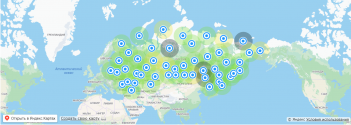GNSS + INS + kalman filter can give good relative accuracy but the civilian error of a gnss signal can put you a few meters away even if the software thinks if in the correct position.It seems to use a custom GNSS system with multiple sensors. I also would not be surprised if they took into account GPS, Glonass, and Beidou signals simultaneously to compute the position.
Millimeter wave Active Radar Homing could be an explanation.I watched a Liu XiaoFei video recently where he speculates Shahed-136 may use Millimeter wave Active Radar Homing. Possible that Shahed-136 doesn't have a "man-in-the loop" function unlike Harop. Maybe someone who knows more about the drone types and guidance can expand more on this.
An cheap optical sensor with a few algorithms would have made this drone even more dangerous, with the ability of hitting moving targets.It's strange, even a plain optical camera would have been useful and not added much cost or weight. I imagine the Iranians struggled to integrate the electronics or datalink.
Either way or they are using military grade GNSS reciver or some kind of sensor. If is the first then it could be a problem for the Russians once they run out military chips, they will have to downgrade to civilians Chinese GNSS receivers reducing accuracy. Lets see what happens.
Last edited:

